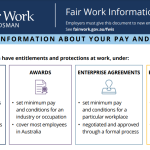Alternative Funding Routes for Innovative Australian Businesses
We spoke about the measures the Government has taken to encourage Australian entrepreneurs to start innovative businesses in Australia, by making it easier to obtain funding, through a number of tax incentives to investors who fund ‘innovative’ businesses.
to encourage Australian entrepreneurs to start innovative businesses in Australia, by making it easier to obtain funding, through a number of tax incentives to investors who fund ‘innovative’ businesses.
Encouraging innovation in this country is vital to Australia’s continued economic prosperity, as our ability to rely on the export of resources continues to wane. Indeed, Australia was once a place of innovation and invention.
Restoring Australia to its former innovative glory
Until the mining and resources boom took hold, Australia used to invent lots of things — things that changed the world, in fact. Sure, there are the inventions most people know about — the black box flight recorder, the hills hoist, the Victa lawn mower, cask wine — but Australians have also invented countless other things we now consider integral to our everyday life, such as:
- Plastic banknotes – the Reserve Bank of Australia and the CSIRO, 1988
- Ultrasound scanner – David Robinson and George Kossoff, 1961
- Bionic ear – Professor Graeme Clark, 1982
- RaceCam – Channel 7, 1979
- Pacemaker – Mark C Lidwel and Edgar H Booth, 1926
- Electric drill – Arthur James Arnot, 1889
- Wi-Fi – Dr John Sullivan and his team at the CSIRO, 1990s
- Refridgerator – James Harrison, 1854
- Google Maps – Lars and Jens Rasmussen developed the platform, 2003.
Although these inventions are tangible objects, created by a team of scientists or an individual inventor, they’re still innovations, which the government is hoping Australians can do more of in the future and, rather than see those innovations become fully realised applications elsewhere, as was the case for the most of the inventions on that list, also see them realised on Australian soil.
In other words, rather than Lars and Jens Rasmussen selling their startup to Google, Malcolm Turnbull would have liked Lars and Jens to have found the necessary capital that would have let them expand, develop and, ultimately, keep their original mapping technology here. (Although, the upshot in this situation is that Google did establish an R&D team here in Sydney, creating a raft of new high-tech jobs.)
Could the Innovation Bill be Helping Your Business?
All businesses that passed the ‘innovation test’ can now seek funding to help take them to the next level of their development phase from alternative avenues, rather than the traditional route of going to a bank or finance lender: seeking and obtaining funds from an angel investor. Take the following scenario, for example:
| Daniel is the founder of a startup business called EatSmart that is developing an online application to deliver easy, low-cost meal plans that will help people achieve weight loss goals, manage their dietary requirements or maintain their healthy eating lifestyle. He is looking to raise $200,000 in equity finance to continue developing the software.
Bill, an experienced early stage angel investor, believes that EatSmart has excellent growth potential, particularly given its experienced management team, which will be able to manage and oversee the business’s growth. He invests the $200,000 and, under the new incentives introduced in the Tax Incentives for Innovation Bill, 2016, claims a 20 percent non-refundable tax offset, reducing his taxable income by $40,000. In addition to contributing capital, Bill also uses his business skills to help EatSmart grow. Four years later, Bill sells his shares for $400,000, which is exempt from capital gains tax (CGT), because he held the investment in EatSmart for the minimum period of three years, but no more than ten years, allowing him to keep the full $200,000 gain on his initial investment. |
Let’s suppose, however, that you decide not to go down the angel investor route and, given your limited track record and inability to meet high-interest loans, banks and other lenders consider you a risky investment. Normally, this would put an end to your business aspirations; under the government’s crowd-sourced equity funding scheme, however, you still have the option of funding your idea. Consider the following example of this scenario:
| Sarah has developed a new idea for high-performance wireless sports earphones that withstand high intensity exercise without any compromise on sound quality. They’re also not just sweat proof but waterproof to 200m, which is unlike any other comparable product on the market.
Sarah’s earphones work really well in field, but require significant refinement to improve their saleability – specifically to the overall look and design of the earphones, as well as to the battery life. She estimates this will cost approximately $400,000. Sarah initially seeks funding from family and friends and manages to raise $50,000. She turns to traditional lenders for the rest, but because she has no previous track record of successfully developing and growing a business, lenders consider her too risky to invest in. A year ago, Sarah would have been forced to put her plans on hold, but the introduction of new crowd-sourced equity funding laws make it possible for her to go down another path. In order to qualify for the CSEF scheme, Sarah converts her proprietary company into a public one, knowing that she can take advantage of the five year exemptions from the normal reporting and disclosure requirements that typically apply to public companies. Through a crowdfunding platform, Sarah is able to secure the additional $350,000 she needs to develop a fully refined prototype. |
Do you have an innovative business idea?
Perhaps you noticed that, in each of these examples, the entrepreneur had already transitioned their business idea into a business reality, by producing some initial prototype, and it was at that point that they were able to secure further funding to take their business to the next level.
That’s because investors rarely put money into ideas alone. Instead, they invest in businesses that can show that their idea can be realised in some rudimentary fashion, but require further investment to make it functional and saleable.




















